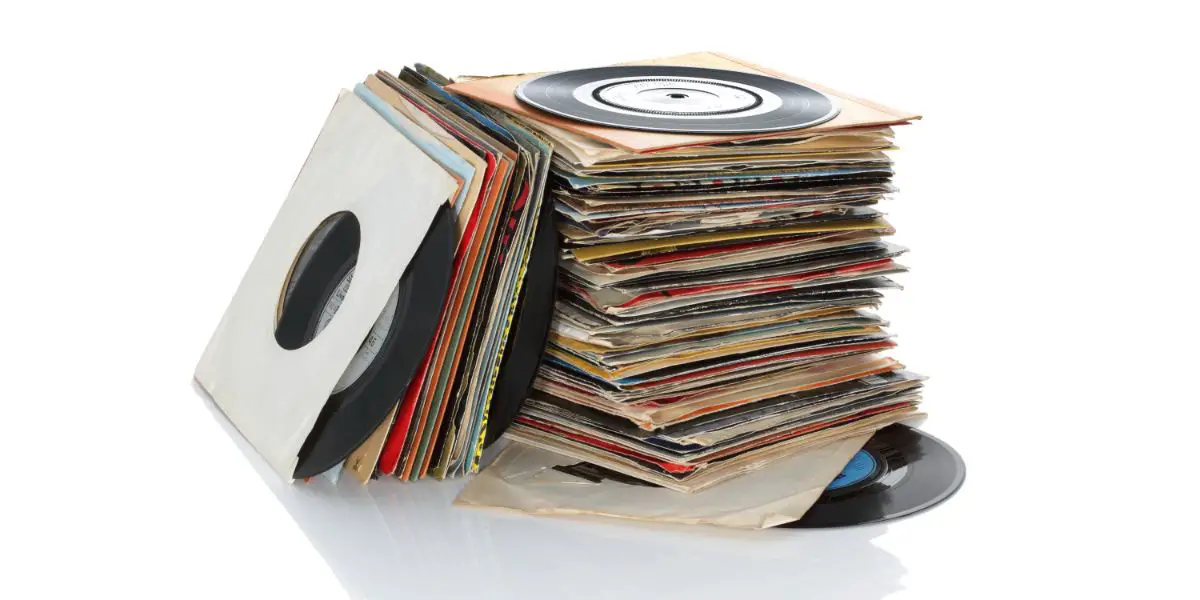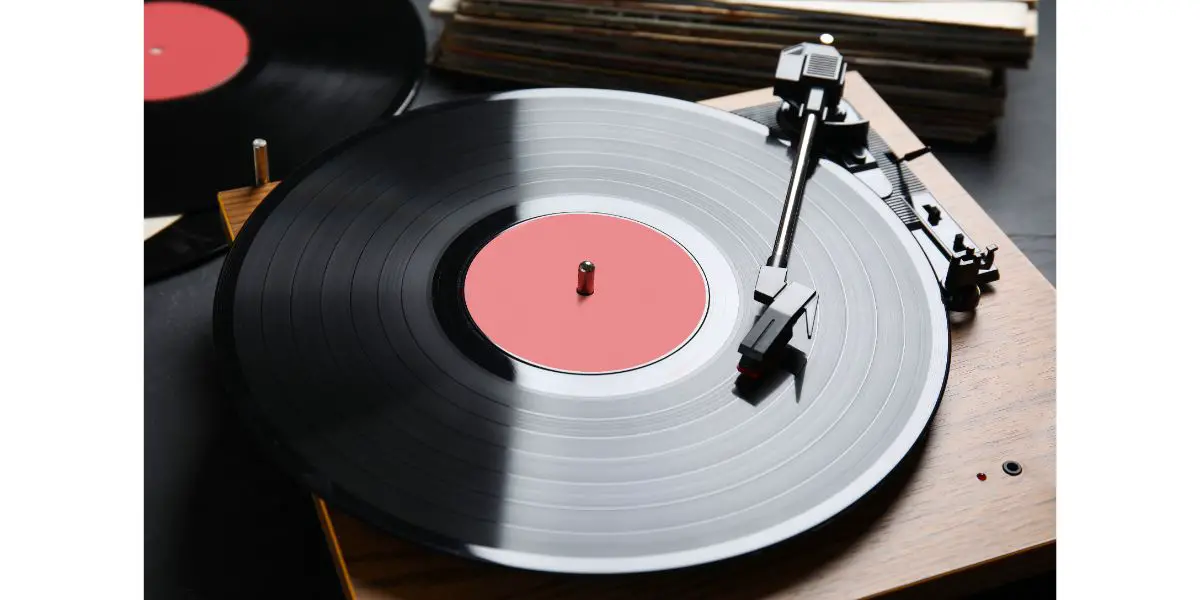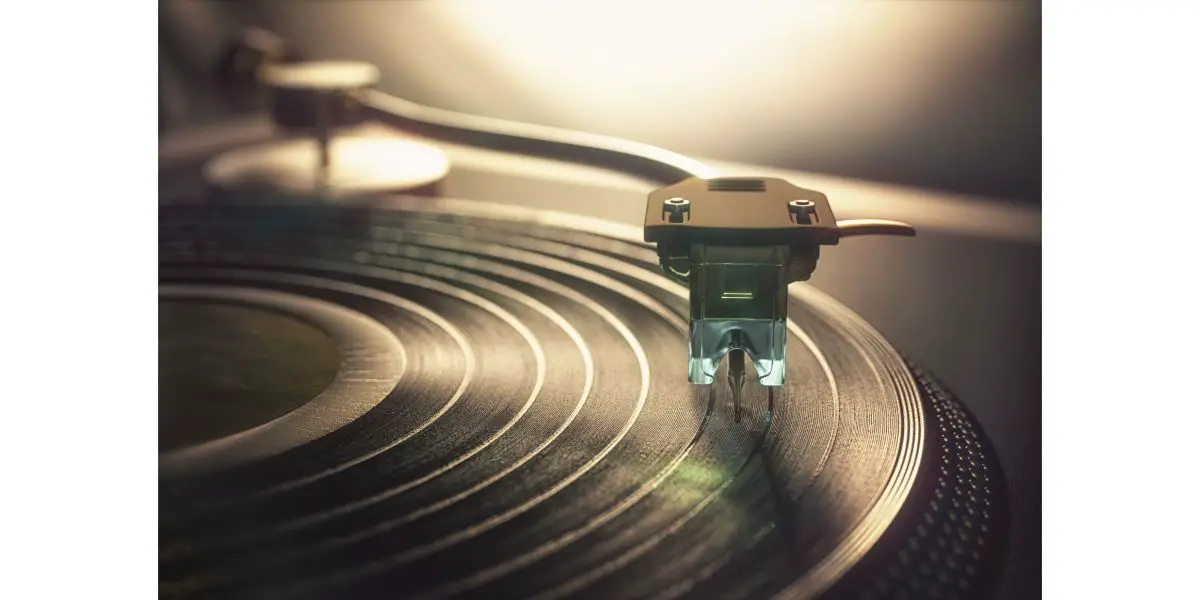Disclaimer: This post may contain affiliate links, meaning we get a small commission if you make a purchase through our links, at no cost to you. For more information, please visit our Disclaimer Page.
Audiophiles claim that nothing sounds as good as vinyl does. Many people feel the same way, which made way for the resurgence of vinyl. Before buying and collecting old or used records, you need to know a few things. That includes whether they will degrade over time, what goes into making a record, and why your vinyl might wobble.
Table of Contents
Do Vinyl Records Degrade Over Time?
There is a reason CDs overtook vinyls in popularity. CDs and cassette tapes are easier to carry and can store more songs than a vinyl records. Furthermore, many believe that vinyl records degrade and lose their quality over time.
They even claim that vinyl records lose their audio quality after you listen to them a few dozen times. While vinyl records degrade over time, you can learn what causes this and how to prevent it.
4Causes Records to Wear Out
The way you store your vinyl records is one of the main causes of why they wear out. Improper storage often results in some general wear and tear that can eventually wear them out. For example, if you don’t use caution when pulling them out of their sleeves, you can scratch the surface and cause other types of damage.
1. Storage
In the old days, people kept their record collections in old plastic milk crates. You’ll find similar modern storage units like those old crates.
How you store your records significantly determines how long they last and whether they wear out. It includes where you keep them and how you store your collection. If you stack your records on top of each other, they will wear out faster, even if you keep them in their original sleeves.
2. Humidity
While some records are worth a lot of money, others are only worth $1 or less. Keep your collection in good shape and preserve the value of your records — be careful of humidity.
Not only can the moisture in the air damage the sleeve, but it can affect the record itself. When storing or using your records, keep them in rooms where the humidity level remains between 30 and 40%.
If you have more humidity, use a dehumidifier. Conversely, if there’s less humidity, use a humidifier. Keep in mind that moisture attracts mold spores and dust.
3. Equipment
Another thing that causes vinyl degradation is the equipment you use. Expert collectors warn newbies to avoid using cheap record players. They can scratch records and cause other types of damage.
There is a big chance that an old stereo or player can scratch the record also, especially as the needle moves. You should avoid the suitcase and portable players, too. While they let you listen to music on the go, they can also cause a lot of damage and wear down your records faster.
4. Light
You may not realize just how much damage light does to your records. This includes both UV/natural light and the lighting in your home. Frequent exposure to any type of light warps the records, making it harder for you to listen to and use them.
Another issue is that light often produces heat that damages records. You only need to worry when the temperature reaches 140℉ or higher. Your home may reach this temperature on a hot day when you leave the windows closed and the AC off. Records can also get too hot because you store them too close to your vents.
How Many Times Can You Use a Record?
In most cases, you can listen to a record 1,000+ times before seeing any signs of degradation. Wax cylinders were among the earliest types of records and only lasted for a dozen or so uses.
Phonograph records were so durable that you can still play them today and enjoy sharp audio. Whether you collect records from thrift stores and other sources or buy new ones, they can last as long as a CD or even longer. If you use caution, you should get at least 100 plays out of a record.
How Can You Keep Your Records Safe?
Taking care of your records is a great way to reduce the risk of degradation. Start with proper storage. No matter how you store them, you want to keep the albums away from direct sunlight and high temperatures.
Do not store them within a few feet of any vent or leave them close to your windows. Always store your collection upright instead of flat. Storing records flat can warp them and wear them down, especially if you stack other albums on top.
Make sure you know how to clean vinyl records, too. You never know when someone with sticky fingers might touch the album. While you can buy a record cleaning kit, it’s just as easy to use a microfiber cloth and an all-purpose cleaner.
Wipe the record’s surface with dry cloth to remove static buildup and dust. Then, wet the cloth with distilled water and gently run it across the record’s grooves.
Mix one part of your cleaner with 30 parts of water and use the solution on the cloth to remove excess debris. Dry the record with a microfiber cloth that absorbs the leftover moisture.
What are Vinyl Records Made from?
Since it is called a vinyl ecord, you might assume it’s made from vinyl. This is just one of the materials used to create them, though. Most records come from a resin mixture of different components. We created a list of those components and their functions.
Polyvinyl chloride: Also known as PVC, this material gives the record its structure. It helps the maker add the groves that let you hear music and also helps the record stand up to the needle on your player. PVC is more durable than some materials used in the past.
Plastic/vinyl: Records also contain plastics or vinyl that make them more flexible. The makers also often use plasticisers, which makes the records more durable.
Heat stabilizers: Heat stabilizers help records stand up to hotter temperatures without wearing down. When a brand makes a record, it sends it through machines that produce a lot of heat. These stabilizers stop the record from cracking or breaking down.
Colorants: Vinyl records are black because of the colorants used. Those colorants can also prevent static buildup. You’ll find records that come in different colours due to the colorants used.
Lubricants: Though you might not expect vinyl records to contain lubricants, these materials create a smooth surface on the record. It can more easily go through the different machines without breaking. Lubricants also help the stylus and needle move smoothly across the records.
Are All Vinyl Records the Same Quality?
No, all vinyl records do not have the same quality. The albums you buy off the shelves today do not sound the same way that the original versions did.
While modern artists release some of their music on vinyl, you’ll also find classic albums reissued. Many collectors and audiophiles claim that original pressings are the best.
An original pressing refers to the first ones that come off the line. The first run is usually small. Only if the record is a hit will the brand make new ones. You might find that an original album has had four or more pressings since it first came out. The future pressings allow the studio to make changes to the album.
A good example is the Yesterday and Today album from The Beatles. It initially came out with a cover that showed the Fab Four dressed in white coats with doll body parts around them. Negative feedback led to the studio pulling the record from stores and issuing stickers to cover it. The first pressings of the record are quite valuable today.
Reissue Pressings
Many of the records you see on store shelves today are reissue pressings. The studio released a new version of the album based on the original. They may contain different arrangements of certain songs or songs that weren’t included in the original release.
Reissue pressings rarely have the same quality that original pressings do. On the other hand, you can pick up a reissue for $30 or less, which is often more affordable than buying an original issue.
Why Do Vinyl Records Wobble?
Records often wobble because they are not completely flat. It’s easy for a record to warp when exposed to sunlight or high temperatures. But it can also warp because of how you stored it or the seller shipped it.
While it may have a slight wobble that doesn’t affect its sound, a record can also wobble so much when it skips or refuses to play in certain areas. You can buy a new vinyl record off the shelf and find that it wobbles when none of your other records does.
How Do I Stop My Vinyl Records from Wobbling? (4 Ways)
Nothing is worse than a record wobbles when you just want to hear your favorite artist. There are a couple of ways you can fix the problem and get more from your vinyl collection.
1. Fix Warped Records
The biggest reason why your record wobbles are that it is warped. Fixing the issue is easy as long as you have some heavy books.
Place the record inside its sleeve and set it on a flat surface. Set the heavy books on top of it. The weight from the books should push out the warp and leave the record flat.
Make sure you check on it daily to see if the process works. You need to verify that the books aren’t causing any extra damage and that you didn’t leave anything under the record that made it crack.
You can also use a clamp to fix a warped record. Use a clamp to attach to your table or another flat surface. Place a flat and smooth object on the table and place the record in its sleeve on the top.
You will then place another flat object on top and attach the clamp. Some clamps are big enough that they will cover the entire record. You usually must leave the record clamped for a few days or longer to remove any warping.
2. Clean the Platter
If you have multiple records that wobble, clean the platter on your player. The platter can pick up dust and debris like animal fur and nicotine splatter in your home.
Rubbing alcohol works well when cleaning your platter and will not damage any parts. You can apply using a microfiber cloth and let it air dry.
3. Check the Rubber
Many record players have a rubber seal located around the platter. This rubber can dry out over time and become so brittle that it breaks or begins flaking off the player.
If the rubber is still soft and in good condition but loose, use glue to secure it. Once the rubber dries out, you will need to replace it.
4. Adjust the Speed
Both new and old record players have a feature that lets you adjust the speed. Records come in both 12” and 7” sizes. Any extended play records are 45s, while singles and smaller records are 33s.
Records can wobble because they are a different size than your stereo can play. Check the speed, which you’ll find around the arm. Make sure you set it to the type of records you play.
Are Vinyl Records Supposed to be Flat?
Records generally aren’t completely flat. Even if you buy an album from another collector, it can look slightly warped because of the temperatures it faced during shipping.
You’ll find that most are not 100% flat when you buy records from online sources. A warped and wobbly record that can still play well. If it bothers you, look at how you can fix a warped record or take it to a shop that will do it for you.
Conclusion
Joining the record revolution is easy, even if you were born in a different era. Records have great sound quality and are compatible with old and new players. While records can slightly degrade over time, knowing how to care for them will help you create a collection that outlives you.



